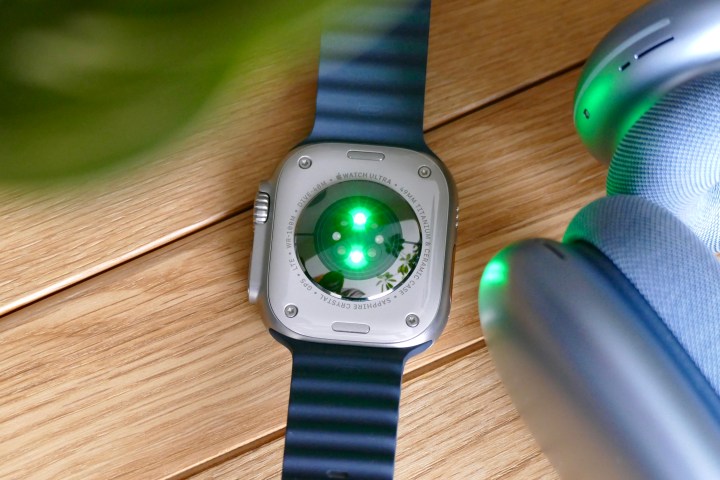We already know that skin tone can affect the accuracy of a heart rate sensor on a smartwatch or fitness band, but what other factors can influence the results you get? For example, does biological sex make a difference?
To find out if heart rate sensor accuracy changed, we asked the experts. Here’s what they told us.
Why ask the question?

Why ask the question in the first place? Most heart rate sensors on wearables are photoplethysmography (PPG) sensors, which use light to detect the rate of blood flow, and it shines through skin and tissue to get that data. Potentially, any differences in our skin may affect how effectively the PPG sensor works. But are there any differences between male and female skin?
According to this study by the International Journal of Women’s Dermatology, there are. It states:
“Studies show that the skin parameters of hydration, transepidermal water loss, sebum, microcirculation, pigmentation, and thickness are generally higher in men but skin pH is higher in women.”
Skincare brand Dermalogica writes on its website:
“Androgen (testosterone) stimulation causes an increase in skin thickness, which accounts for why a man’s skin is about 25% thicker than a woman’s. In addition to being thicker, a man’s skin texture is tougher.”
The site goes on to list other differences ranging from higher collagen density in men’s skin compared to women’s. There are clearly differences, but are they substantial enough to affect the heart rate sensor on our smartwatch?
Rockley Photonics
We contacted Dr. Andrew Rickman, CEO of Rockley Photonics, a top supplier of integrated optical components for the healthcare and consumer electronics industry. One of Rockley Photonics’ customers is Apple, and it’s highly likely the company’s sensor technology is found in the Apple Watch.

When we spoke to Rickman recently he told us the company, “works with six out of the top 10 wearable consumer tech companies in the world.” It’s safe to say Rockley Photonics knows its stuff when it comes to health-related sensors. In an email, Rickman told Digital Trends:
“Based on industry data and our own research, we have found there are no fundamental accuracy differences between biological males and biological females when sensors in wearables measure heart rate.”
That seems pretty conclusive. Interestingly, despite there being no change in accuracy, Rickman revealed the data collected by its sensors can show the biological sex of a person, and even their approximate age:
“We can tell the biological sex of an individual from the signature signal [a Short Wavelength Infrared (SWIR) signal] we get,” he continued. “We have a biometric signature which is unique, and gives the biological sex of a person and their approximate age. We will develop and implement these functions in software updates in the future.”
Movano Health
Movano Health is in the process of making a smart ring for women and is therefore ideally positioned to understand if sensors and algorithms read differently depending on biological sex. Digital Trends spoke to Movano Health’s CEO, John Mastrototaro, for further insight.

In readiness for the release of its smart ring, Movano Health is currently working through the Food and Drug Administration’s (FDA) approval program, which includes clinical trials to establish, among other things, sensor accuracy.
“We are in the trial process with the clinical center right now,” Mastrototaro said. “We’ve definitely seen differences with skin tone. The way our system works is you ramp up the intensity of the light based on the level needed to be able to measure, regardless of the skin tone or thickness, so we can get to the artery. In terms of biological male versus female, we have not seen a huge difference there at all.”
However,” he continued, “Some things that might make a biological female slightly different, potentially, are differences in perfusion, or just the size of the artery. Someone who has got poor perfusion to their extremities could potentially see a difference if they don’t have that volume of blood pumping in. It might be a little bit different, but nothing has come out in what we’ve seen today. In terms of the physiology of the artery that’s passing into the finger, it’s the same for men or women, we’ve all got very similar tissue. But that’s not to say it may not be present in some special cases,” he concluded.
According to our two experts, heart rate sensor accuracy should not be affected by biological sex, at least not in the same way it is affected by skin tone. If you are looking at a new health and fitness wearable, we have our recommendations for the best smartwatches here, and for the best fitness trackers here.



